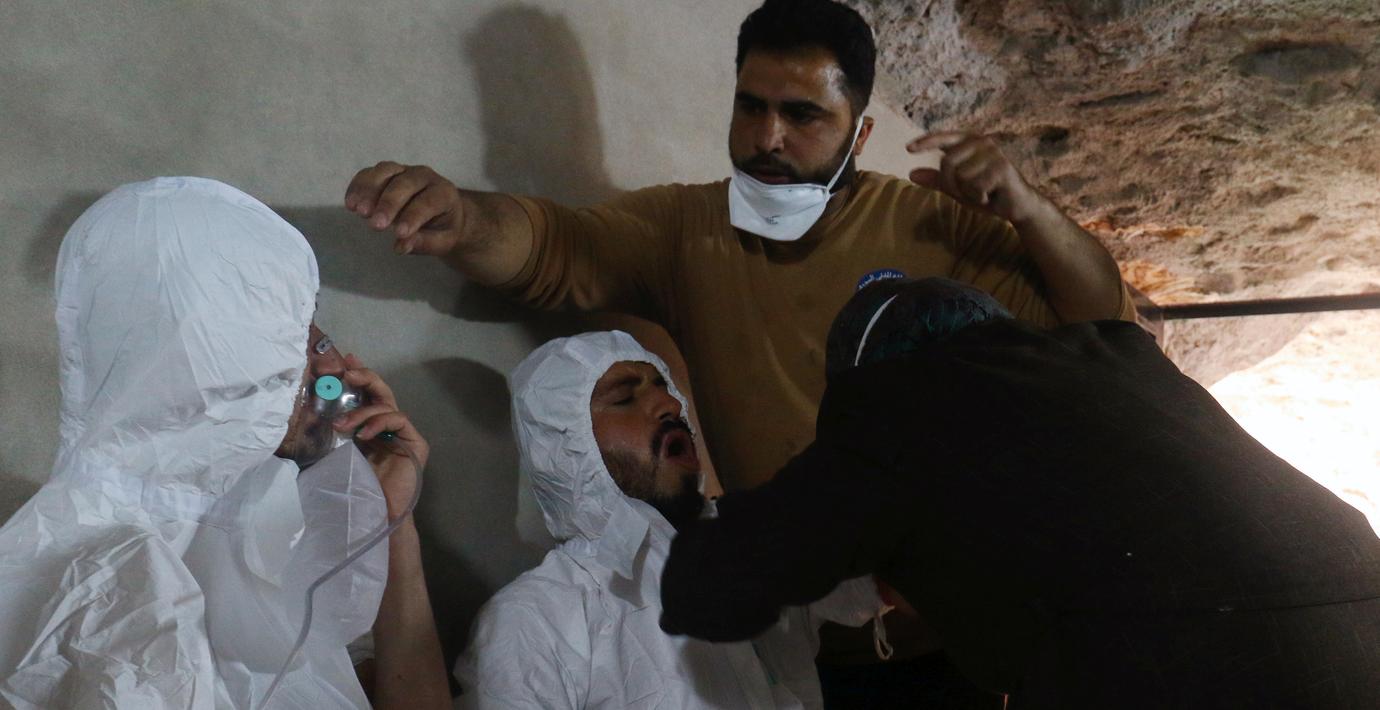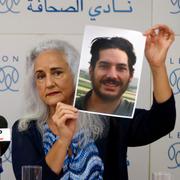
Människor svimmade och tuggade fradga
Bilder från den misstänkta gasattacken i Syrien visar minst två män med fradga runt munnen, skriver TT. Enligt det oppositionella Syriska människorättsobservatoriet har flera människor också svimmat och kräkts.
Minst 58 personer dödades i attacken och tiotals skadades, uppger det oppositionella Syriska människorättsobservatoriet, som bevakar Syrienkriget från Storbritannien.
Det är oklart vem som ligger bakom flygräderna, men syriskt och ryskt stridsflyg har tidigare fällt bomber över området. Idlibprovinsen i nordvästra Syrien kontrolleras till stora delar av en allians av väpnade oppositionsgrupper, däribland extremiströrelsen Jabhat Fatah al-Sham, tidigare Nusrafronten.
bakgrund
Syriska människorättsobservatoriet
Wikipedia (en)
The Syrian Observatory for Human Rights (also known as SOHR; Arabic: المرصد السوري لحقوق الإنسان), founded in May 2006, is a UK-based information office that has been documenting human rights abuses in Syria; it has focused since 2011 on the Syrian Civil War. It is frequently quoted by major Western news media, such as Voice of America, Reuters, BBC, CNN and National Public Radio, since the beginning of the uprising about daily numbers of deaths from all sides in the conflict and civilians killed in airstrikes in Syria. SOHR has been described as being "pro-opposition" and anti-Assad.
bakgrund
Kemiska vapen i Syrienkriget
Wikipedia (en)
Use of chemical weapons in the Syrian Civil War has been confirmed by the United Nations. The deadliest attacks were the Ghouta attack in the suburbs of Damascus in August 2013 and the Khan al-Assal attack in the suburbs of Aleppo in March 2013. Several other attacks have been alleged, reported and/or investigated.
A U.N. fact-finding mission and a UNHRC Commission of Inquiry have simultaneously investigated the attacks. The U.N. mission found likely use of the nerve agent sarin in the case of Khan Al-Asal (19 March 2013), Saraqib (29 April 2013), Ghouta (21 August 2013), Jobar (24 August 2013) and Ashrafiyat Sahnaya (25 August 2013). The UNHRC commission later confirmed the use of sarin in the Khan al-Asal, Saraqib and Ghouta attacks, but did not mention the Jobar and the Ashrafiyat Sahnaya attacks.
The UNHRC commission also found that the sarin used in the Khan al-Asal attack bore "the same unique hallmarks" as the sarin used in the Ghouta attack and indicated that the perpetrators likely had access to chemicals from the Syrian Army's stockpile.
In August 2016, a confidential United Nations report explicitly blamed the Syrian military of Bashar al-Assad for dropping chemical weapons on the towns of Talmenes in April 2014 and Sarmin in March 2015.
Omni är politiskt obundna och oberoende. Vi strävar efter att ge fler perspektiv på nyheterna. Har du frågor eller synpunkter kring vår rapportering? Kontakta redaktionen



